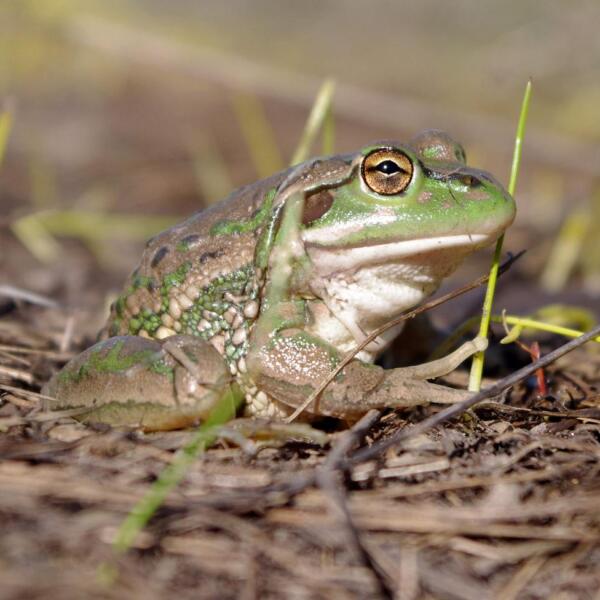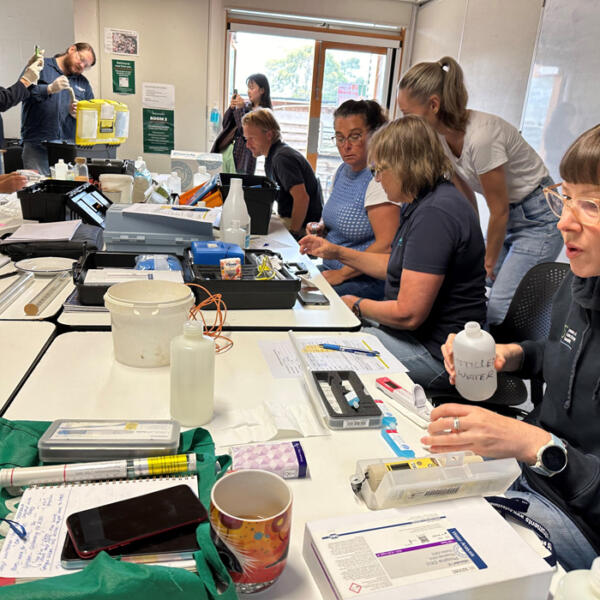State update
Happy spring and welcome to the Winter Wrap-Up. I recently held a two-day workshop, where the EstuaryWatch and WaterWatch volunteer coordinators came together to connect and learn from some interesting projects happening around the state.
We picked up some great tips on improving our Quality Assurance and Quality Control (QAQC) process thanks to Emma Nilsson and West Labs – I’ll dive into that a bit more below. We also heard from Brady Hamilton at Pesticide Watch about his PhD research. The amount of pesticides in our waterways is really worrying. I’m hoping to have an online webinar for volunteers early next year, it would be great if we could all support his work.
We also had an interesting session with Esther Gonstalla on how powerful info-graphics can be, and Ruby Stoios from the Arthur Rylah Institute gave us an update on the water quality triggers for fish, a project that has recently been completed.
You’ll notice this update is more about what I’ve been up to at the state level rather than regional updates. That’s because the Annual Achievements Report, which will cover highlights from across the state, is coming out soon.
Thanks for tuning in, if you have any question or comments please don’t hesitate to get in touch.
Justine
State Facilitator EstuaryWatch and WaterWatch
justine.holmes@ccma.vic.gov.au
Events and webinars
Join us for a frog webinar on the 24th of September
Mark your calendars for September 24th from 12:30pm to 1:30pm for an exciting frog-themed webinar. We’re thrilled to have Professor Kirsten Parris from the University of Melbourne join us to share her insights on the threatened Growling Grass Frog. Plus, she’ll discuss the intriguing journey of the Eastern Dwarf Sedge Frog, which is making its way to Victoria from NSW and QLD in banana boxes.
Jane Petch from Melbourne Water will also be on hand to guide us through the Frog Census App to help monitor frog populations.
This webinar is kicking off Frog Month Victoria! This initiative began with EstuaryWatch and WaterWatch coordinators from the CMAs and Merri Creek Management Committee, who wanted an annual frog monitoring program. We encourage you to get involved by recording frog calls this October using the Frog Census App.
We’ll be focusing on two threatened species: the Growling Grass Frog this October (Frog Month – Spring) and Bibron’s Toadlet in April (Frog Month – Autumn). We’re also eager to track the presence of the Eastern Dwarf Sedge Frog around the state. Of course, we’d love to hear recordings of all frog calls from Victoria!
E. coli case studies from Melbourne and regional Victoria
24th of October 12:30pm – 1:30pm
We’ll be diving into two important projects focused on E. coli in Victoria on October 24th from 12:30 PM to 1:30 PM.
Juliet LeFeuvre, an EstuaryWatch volunteer and member of the Wye River Separation Creek Community Association, will share insights from a preliminary report on E. coli levels in Wye River.
We’ll also hear from Darren Cottam from the Environmental Protection Agency, who will present his work on the Beach Report in Melbourne, a project that predicts water quality across 36 beaches in Port Phillip Bay.
QAQC update
Tips to improve the way you test!
As I mentioned above, the EstuaryWatch and WaterWatch coordinators all came together in Melbourne a couple of weeks ago and we spent a long time discussing how we can improve the way we use our equipment. Emma Nilsson our QAQC expert and Mark Bourke from West Labs gave us a lot to think about. Please have a look through the tips below, let me know if you have any further questions: holmes.justine@gmail.com. Or contact your coordinator for more info.
- Do not use distilled water to clean instruments at the end of use, it kills the membrane because it sucks the ions out of it. Better, to use tap water or pH 7
- Calibration has a specific order, pH 7 then pH 4
- Equipment/probes needs to be in cool storage, not in cars/sheds. Being in hot conditions can really shorten the life of the instrument
- Buffers need to be in date – they go off after 18 months (unopened). Make sure you have the expiry date on the bottle.



